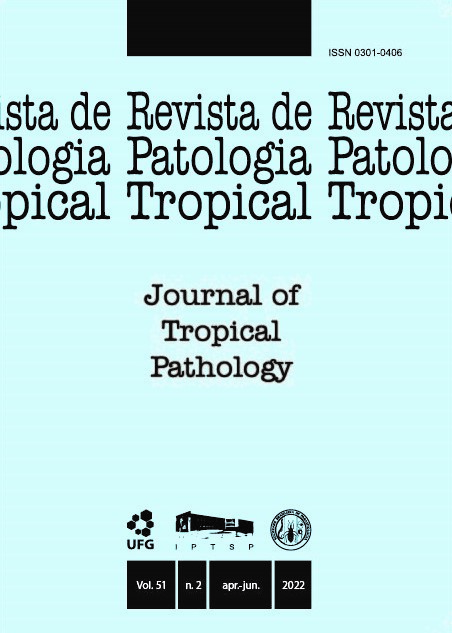Diagnosis of chromoblastomycosis: an historical review
DOI:
https://doi.org/10.5216/rpt.v51i2.71026Resumo
Chromoblastomycosis is a skin infection caused by dematiaceous fungi, characterized by a verrucous plaque on the limbs. It mainly affects rural workers in tropical countries. The purpose of this review is to identify how the diagnostic methods used in the propaedeutic of chromoblastomycosis emerged and were developed. The MeSH terms “chromoblastomycosis” or “chromomycosis” or “verrucous dermatitis” and “diagnosis” were used to search articles indexed in MEDLINE and LILACS databases. The description of a first-time-used method in diagnosing chromoblastomycosis or modifications and innovations in an existing technique was the criteria used to deem the article eligible. The first methods described in diagnosing chromoblastomycosis were histopathological examination and culture, which characterizes and defines the disease in the early 20th century. Subsequently, they were described as direct microscopic examination, fine needle aspiration for cytology, electron microscopy, serology, molecular tests, scintigraphy, nuclear magnetic resonance and dermoscopy. Tests based on the direct identification of the fungus through biopsy, culture, or direct microscopy are the oldest and more employed methods for diagnosing chromoblastomycosis. The polymerase chain reaction was introduced in the last few decades and is a promising technique. Dermoscopy of chromoblastomycosis shows blackish red dots and white and pink areas along with scaling. Other techniques, such as serology and skin testing for delayed-type hypersensitivity, have not been incorporated into clinical practice.
KEY WORDS: Chromoblastomycosis; diagnosis; review.
Downloads
Downloads
Publicado
Como Citar
Edição
Seção
Licença
The manuscript submission must be accompanied by a letter signed by all authors stating their full name and email address, confirming that the manuscript or part of it has not been published or is under consideration for publication elsewhere, and agreeing to transfer copyright in all media and formats for Journal of Tropical Pathology.

